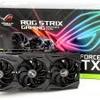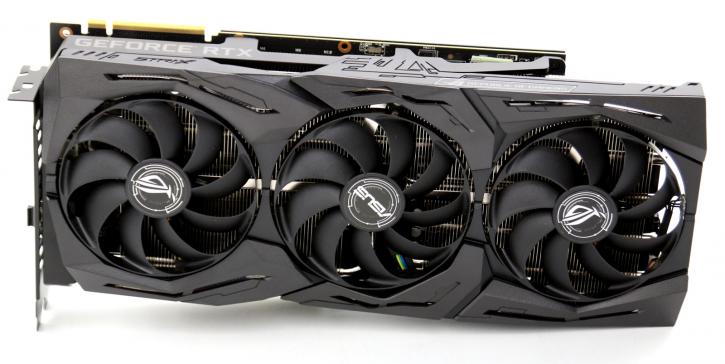Conclusion
Conclusion
It has been a wild seven days with all the RTX reviews, discussions and content. The dust is settling a little bit and yeah, we continue on a steady pace with the reviews as we still have cards to cover. From a hardware design point of view, ASUS did things really right with the STRIX OC. Sure it has a small factory tweak that is almost insignificant, but the rest is just really nice. You've got one of the best coolers applied to this GPU and that shows. In fact, ASUS has so much leash left that they applied a silent mode, which makes the card run pretty much as fast as the performance mode, yet now with temps running slightly above 70 Degrees C. That nice, especially if you dislike noise. On that topics, this card did exhibit coil whine here and there. Overall the RTX 2080 will remain to be a very hard sell though, currently, I see the card as tested today on pre-order starting at € 969,- with most re-sellers asking a staggering € 1.049,-, and let me remind you again, these cards really should sit in an already expensive 700~800 EUR range. Prior to release, I did not see that one coming though, I did not expect prices to inflate by this margin. Absolutely puzzling, especially when you can pick up a GTX 1080 Ti for under 700 bucks. So as long as NVIDIA keeps supplying 1080 Ti chips to the market, we think the RTX 2080 will be the most difficult card to sell compared to the 2080 Ti and pending 2070.
Aesthetics
The STRIX still is a very nice looking card, it slowly is becoming more of the same looks though?. There's little more to say really. I like the dark design and, sure, the LEDs. All the extra RGB LED functionality like an RGB LED strip connector for me is not needed, hey - haters will hate, lovers will love it. At the backside you will now find a switch, allowing you to completely disable the LED system. Nice to see is the meshed hat back-plate, with openings in some areas (GPU/VRM) for venting. I'd like to see more vents at the GPU position though. I remain skeptical about back-plates, they can potentially trap heat and thus warm up the PCB. But the flip-side is that they do look better and can protect your PCB and components from damage and, well, they can look nice so they have an aesthetic appeal as well. Consumer demand is always decisive, and you guys clearly like graphics cards with back-plates. Both the front IO plate and back-plate are dark matte black which certainly gives the card that premium feel.
Cooling & Noise Levels
Far out, really. With the STRIX you can opt for a performance or silent mode. Both modes will offer you the same game performance, however, performance mode topped out at 58 degrees C and Silent mode roughly 72 Degrees C. Whatever your preference is, you'll be fine with it. At Perf mode, you sit in a 38~39 DBa range which means you can only slightly hear the product but is considered silent. At Silent mode, however, we measured an all-new record for an actively cooled performance GPU, .. 32 DBA, what an impressive thing as that is just totally silent. So yeah, while card might be a bit thicker due to adding radiator surface area, it, however, does cool the GU104 really well plus you get options, we like that. I mentioned it already a couple of times, the STRIX was the first 2080 where we could hear coil whine every now and then. We do test on an open platform, and inside a chassis, you'll be hardpressed to hear it, but it's there at higher frequencies/FPS.
Power Consumption
Graphics cards with a TU104 sit at a 225 Watt TDP under full stress, our measurements show it to be in that range when gaming. We think a 600 Watt PSU would be a nice match for these cards paired with a modern age PC. Remember - when purchasing a PSU, aim to double up in Wattage as your PSU is most efficient when it is at 50% load. Here, again, keep in mind we measure peak power consumption, the average power consumption is a good notch lower depending on GPU utilization. Also, if you plan to overclock the CPU/memory and/or GPU with added voltage, please do purchase a power supply with enough reserve. People often underestimate it, but if you tweak all three aforementioned variables, you can easily add 150 Watts to your peak power consumption budget as increasing voltages and clocks increase your power consumption.
Overclocking
We like the new OC Scanner that you will see throughout most GPU tweak utilities, for us that is Afterburner (download). While it only overclocks your GPU a notch, it does create a reliable tweaking curve. A combination of memory, power and voltage settings will bring you a proper overclock. Once you've applied it, you get more performance. The real gurus, of course, will likely prefer a manual tweak. Here we cannot complain either. We gained 130 MHz extra on the clock frequency and with the increased power limiter you'll now see that dynamic boost frequency hovering at and over the 2000 MHz range. Mind you, that frequency can be higher and lower depending on game and benchmark title.
The memory clock tweak was far more complicated, we've been able to add 700 MHz, double that for a double-data-rate and, yes, we had close to 15.4 Gbps running stable. Which is still nice when you think about it for a few seconds. So in closing, exciting is the new OC Scanner functionality. Honestly, it probably needs a bit more development and finetuning, but I can see this become the primary methodology for automated overclocking in the future. Right now it is a little conservative though, but yes, promising.
Concluding
As much as I like the STRIX, it's the GeForce RTX 2080 series are cards will be the more complicated products to sell. The 1080 Ti is smack down on top of this card performance wise, and that model simply is much cheaper to purchase, and TBH even the 1080 ti at 700 EUR we feel is already a lot of money for something to game with. So yeah, pricing is just too far off for the RTX 2080 series that we feel it will be hindering the 2080 sales, bigtime. It is what it is though. When filtering out pricing we have a card at hand that is performing well, has the RTX features (Raytracing and tensor cores for DLSS). All very nice, of course. ASUS, however, did design a card that works really well, proper cooling that can be configured at your acoustic preference, and that's just top notch. The STRIX looks great, even after all these years of having roughly the very same looks. Hidden under the hood are dual-bios, some extra connectors for your RGB bling and fans, and also that microswitch which allows you to kill the RGB lighting. Performance wise, hey you're at that familiar 1080 Ti level and there's nothing wrong with that. As a product for sheer design, looks and performance we can still happily recommend the RTX 2080 STRIX it though as it's a lovely product overall for the ones that like to be the 1st next-gen adopter of Hybrid Raytracing technology.
So I hope you understand what I am trying to say here, as a product design from ASUS, the RTX 2080 is impressive and truly lovely. Really this is the best RTX 2080 I've had my hands on and it deserves kudos to ASUS for that. I also believe that people will love the raytracing and AI related things like DLSS functionality overall. But the pricing defined by NVIDIA, that's the Achilles heel we just can't shy away from. Dropping close to a G or slightly more for it, that is the big problem that NVIDIA will need to address, hopefully soon. Typically products like these end up with a top pick or best hardware award, at this time we're giving it a recommended award mainly due to the lack of RT testing, as well as its very high price level.
Recommended Downloads
- Sign up to receive a notice when we publish a new article
- Or go back to Guru3D's front page



